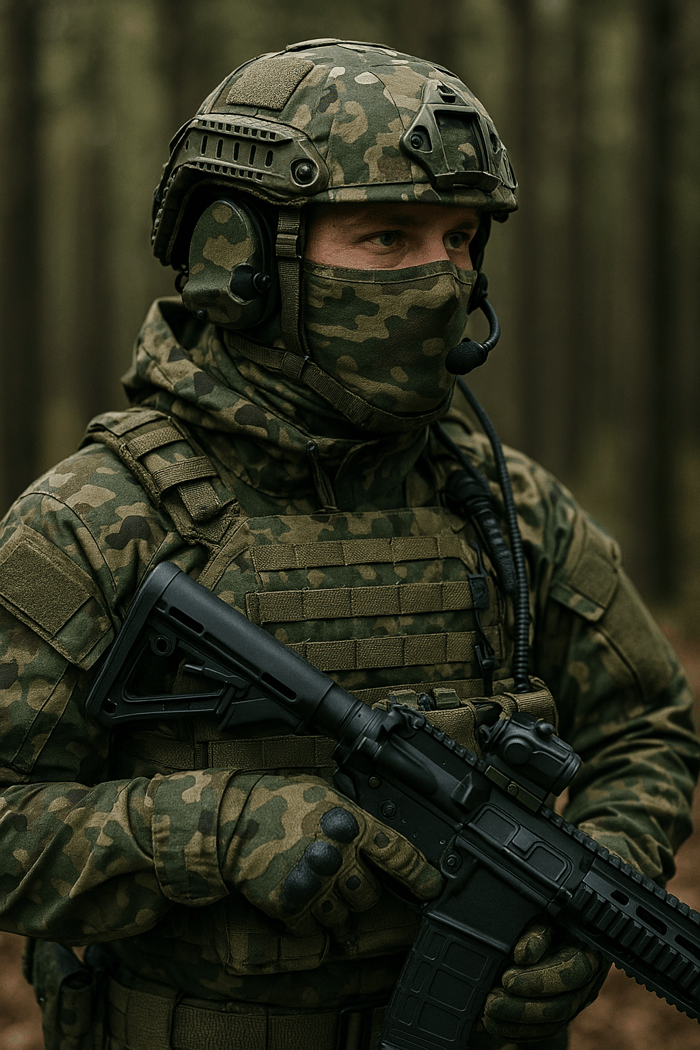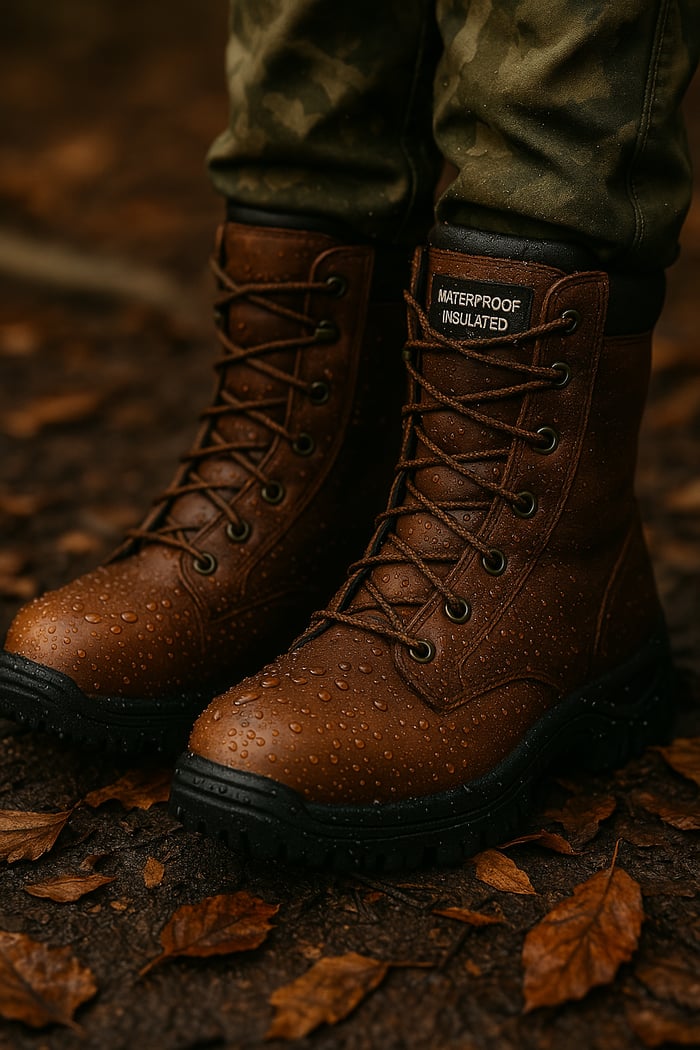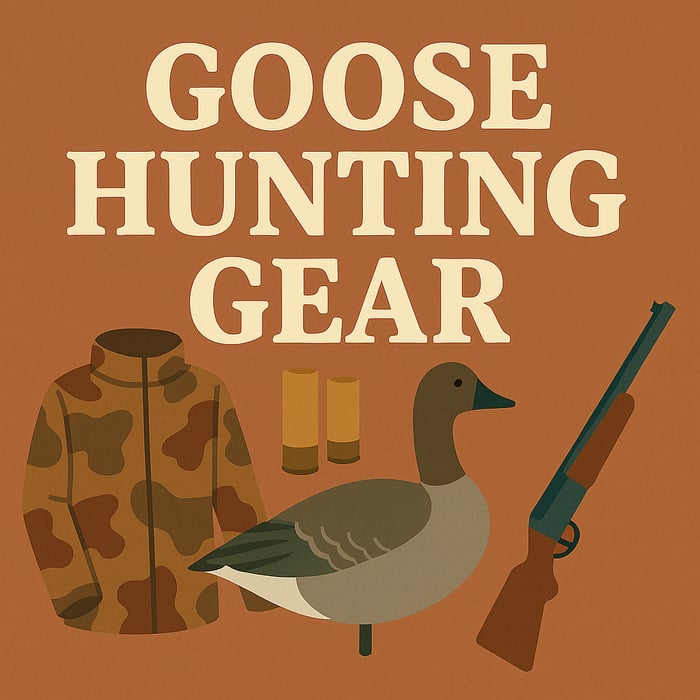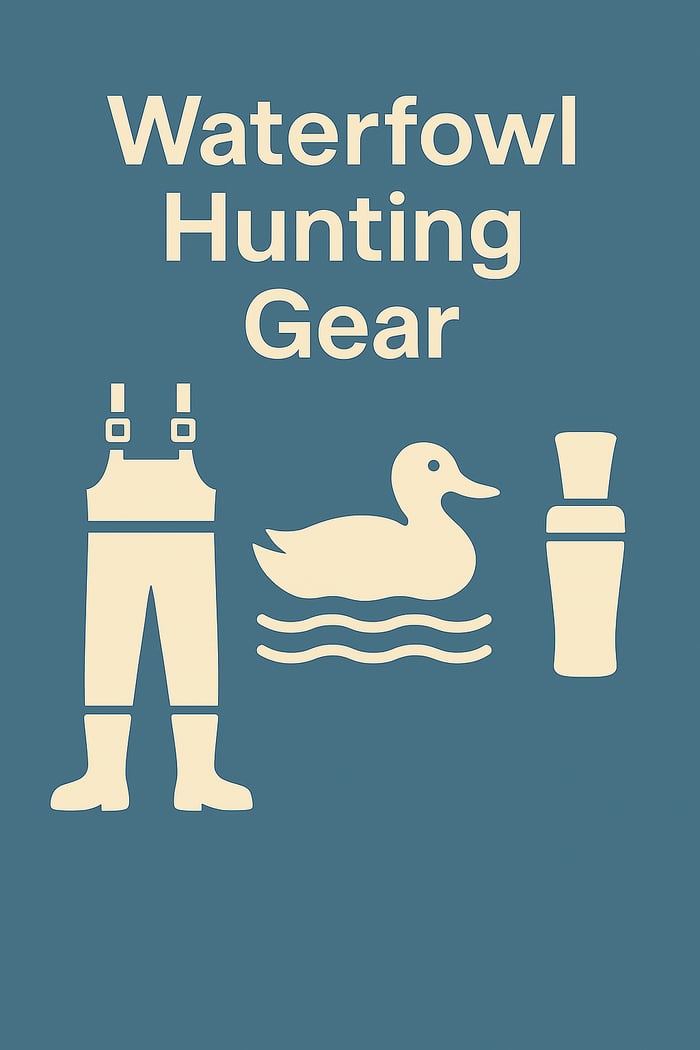Hunting is a thrilling pursuit that combines skill, patience, and a deep connection with the outdoors. Whether you’re stalking deer through dense forests, chasing ducks in muddy marshes, or calling turkeys in grassy fields, camo gear is your ticket to staying hidden from sharp-eyed game. The appropriate camo gear not only hides you but also shields you from extreme weather, making you cozy in the long hours of being outdoors. In this detailed 3000-word guide, we're going to delve into the world of camo and explore everything from clothing and footwear to accessories and some maintenance tips. Written in easy-to-understand language and optimized for search engines, this article will guide you in selecting the best camo equipment for any hunt so you're prepared to succeed. Let's begin!
Why Camo Equipment is a Hunter's Must-Have
Deer, ducks, geese, and turkeys all possess remarkable vision, and some, such as deer, use their sense of smell as well. Camo equipment is meant to render you nearly invisible by merging you into the landscape, be it a forest of leaves, a wetland of reeds, or an open grassland. In addition to camouflage, top-quality camo equipment protects you from the elements—bitter cold winds, driving rains, or clinging mud. Sub-par camo equipment can leave you chilled to the bone, drenched, or worse, detected by your prey, rendering a promising hunt nothing more than a dud. Investing in quality camo makes you comfortable, secure, and quiet, allowing you to have confidence to concentrate on hunting.
This manual will discuss the basic elements of camo , detail how to pick the proper items for your type of hunting, and provide useful advice on maximizing the usefulness of your gear. Whether you're just starting out to assemble your initial kit or you're an experienced hunter looking to refit with a new configuration, everything you need to know about camo gear is covered here.
Basic Elements of Camo Gear for Hunting
Base Layers: The Bedrock of Your Camo Kit
Base layers are the foundation of any camo gear configuration, providing you with comfort by controlling moisture and body temperature. Base layers will be next to your skin, drawing sweat away to avoid chilling you during early morning hunts in cold temperatures. Merino wool or synthetic blends (polyester) work well because they are breathable, dry quickly, and usually resist odor—a very important aspect when hunting game possessing a keen sense of smell such as deer or elk.
Key Features: Lightweight, moisture-wicking, odor-resistant clothing with fitted construction for effortless layering.
Top Picks: First Lite's Wick 150 Base Layer, Sitka Gear's Core Lightweight Crew, and Under Armour's UA Base 2.0 in camo designs are great camo options.
Pro Tip: Wear base layers in neutral colors or muted camo prints to preserve concealment if outerwear is shed in hot weather.
Mid-Layers: Adding Warmth to Your Camo Gear
Mid-layers give you the warmth you need without interfering with movement, so they're an essential part of your camo kit. Fleece jackets, down vests, or synthetic insulating layers such as PrimaLoft are ideal for cold or changing weather. These mid-layers must be light and compressible so that you can pack them away in your pack in case the temperature hikes.
Key Features: Warm, breathable fabrics with camo prints or neutral colors that will enhance your outer layers.
Top Choices: KUIU's Super Down Ultra Vest, Patagonia's Nano Puff Jacket in camo color, and Sitka Gear's Kelvin Lite Down Jacket.
Pro Tip: Select mid-layers that can be compressed to store in your camo pack on long hunts.
Outer Layers: The Heart of Your Camo Rig
Outer layers are the most functional and visible component of your camo equipment, having the job of keeping you dry, warm, and concealed from game. Jackets, pants, bibs, and waders should have waterproof and windproof fabrics such as Gore-Tex or proprietary membranes, combined with camouflage designs specific to your hunting habitat. Well-liked patterns are Realtree Edge for forested areas, Mossy Oak Bottomland for wetlands, Kryptek Highlander for open ground, and Sitka Gear's Optifade for game-specific cover.
Key Features: Silky quiet fabrics to prevent spooking game, waterproof membranes, adjustable hoods, and lots of pockets for gear storage.
Top Picks: Sitka Gear's Fanatic Jacket, KUIU's Attack Pants, Drake Waterfowl's Guardian Elite Waders, and Nomad's Harvester GTX Jacket are all high-end camo .
Pro Tip: Check for camo with articulated knees and elbows for increased mobility when crawling, climbing, or wading.
Picking the Right Camo Pattern for Your Gear
The success of your camo equipment is dependent on the camouflage design. Below is an explanation of common designs and where they are best used:
Realtree Edge: It imitates twigs, leaves, and shadows, ideal for forests and woodlands.
Mossy Oak Bottomland: It is made for wetlands and marshes, camouflaging muddy, flooded timber.
Kryptek Highlander: It employs geometric shapes to disrupt your outline in open country or mountainous terrain.
Sitka Optifade Subalpine/Waterfowl: Science-driven patterns optimized for specific game, disrupting deer or waterfowl vision.
Mossy Oak Obsession: Perfect for turkey hunting, with high-contrast leafy patterns for spring woods.
Pro Tip: Try out your camo in the field so that the pattern does blend in with terrain and light conditions.
Footwear: Camo Gear for Tough Terrain
Quality boots are a foundation of camo equipment, offering support, grip, and protection under harsh conditions. Wetland hunting requires camo-printed waders or waterproof boot with Gore-Tex lining. For forest or mountain hunting, select tough boots with aggressive tread and muted camo detail. Cold-weather hunting requires insulated boots with 800–1200 grams of Thinsulate.
Key Features: Waterproof membranes, long-lasting soles, and camo patterns or earthy tones that match your attire.
Top Picks: LaCrosse AlphaBurly Pro Waders (Realtree Max-7), Danner Pronghorn Boots, Muck Wetland Pro in Mossy Oak, and Salomon Quest 4 GTX with camo details.
Pro Tip: Match your camo boots with moisture-wicking socks and break them in ahead of the season to prevent blisters.
Headwear and Gloves: Completing Your Camo Gear
Your hands and head are usually the most uncovered body parts, so camo equipment such as face masks, hats, beanies, and gloves is essential for complete camouflage. Camo headgear camouflages your head outline, while gloves cover your hands and provide dexterity for firearms manipulation, calls, or knives. When hunting turkey or waterfowl, a full face mask is also essential to hide your face shine.
Key Features: Camo-patterned, lightweight, insulated materials; touchscreen-compatible gloves; adjustable headwear.
Top Picks: Sitka Gear's Traverse Beanie, Nomad's Harvester GTX Gloves, Under Armour's Camo Face Mask, and Primos Stretch-Fit Full Face Mask.
Pro Tip: Don a camo neck gaiter or balaclava to cover your face and neck, particularly when stalking wary animals such as turkeys.
Accessories: Enriching Your Camo Gear Collection
Accessories such as backpacks, rifle slings, and game bags can also be found in camo prints, rounding out your camo equipment set. These products keep your equipment organized, within reach, and hidden, preserving your stealth in the field.
ampled Features: Silent zippers and buckles, rugged materials, and camo prints that blend with your apparel.
op Picks: ALPS OutdoorZ Commander + Pack (Realtree Edge), Badlands Scout Pack, Avery Floating Duck Strap, and Sitka Gear’s Tool Belt in Optifade.
Pro Tip: Choose camo gear accessories with padded straps for comfort during long carries.
Choosing the Best Camo Gear for Your Hunting Style
The best camo gear depends on the game you’re hunting and the environment you’re in. Here’s how to customize your camo gear for different scenario
Woodland Hunting: Camo Gear for Deer and Turkey
Important Gear: Camo jacket, pants, hat, gloves, and face mask in woodland camouflage patterns such as Realtree Edge or Mossy Oak Break-Up Country.
Emphasis: Camo gear that is quiet, breathes well, and breaks up in forests, brush, or spring woods.
Sample Setup: Sitka Gear Fanatic Jacket, KUIU Attack Pants, Primos camo face mask, and Under Armour Camo Gloves.
Pro Tip: Use 3D leafy camo gear for turkey hunting to break up your outline in thick cover.
Wetland Hunting: Camo Gear for Waterfowl
Key Gear: Camo waders, waterproof jacket, face mask, and decoys in patterns like Mossy Oak Bottomland or Realtree Max-7
Focus: Waterproof, insulated camo gear for wet, cold conditions in marshes or flooded timber.
Example Gear: Drake Waterfowl Guardian Elite Waders, Sitka Gear Delta Zip Jacket, Avian-X Topflight Decoys, and a camo neck gaiter.
Pro Tip: Coordinate your camo gear with camo-patterned decoys for a unified, hidden spread.
Upland Hunting: Camo Gear for Pheasant and Quail
Key Gear: Lightweight camo vest, breathable pants, and tough boots in colors such as Mossy Oak Brush or Realtree Xtra.
Focus: Strong, versatile camo gear for extended walks in fields or brush.
Example Setup: Orvis Upland Vest, Nomad Harvester Pants, Danner Upland Boots camo color, and a RedHead camo cap.
Pro Tip: Select camo gear with game pouches for convenient carrying of shot birds.
Mountain Hunting: Camo Gear for Elk and Sheep
Key Gear: Light camo jacket, packable pants, and high-performance boots in camo patterns such as Kryptek Highlander or Sitka Optifade Open Country.
Focus: Light, rugged camo equipment for extended hikes over challenging terrain.
Example Setup: KUIU Pro Jacket, Sitka Gear Ascent Pants, Salomon Quest 4 GTX with camo details, and a Badlands camo pack.
Pro Tip: Emphasize light camo equipment to avoid fatigue when climbing steep terrain.
How to Choose the Right Camo Gear
Choosing the right camo gear is about finding the right balance between concealment, comfort, and performance. Here are some important considerations:
Match Your Environment
Your camo gear's success lies in blending in with your hunting grounds. Research the ground, grass, and lighting. As an example, a foliated green camouflage like Mossy Oak Obsession is effective in spring forests, but a lighter brown, open camouflage like Kryptek Highlander is appropriate for dry fields. Experiment with your camo gear in the field to observe that it blends well with the environment.
Prioritize Weather Resistance
Hunting involves a lot of exposure to rain, wind, snow, or mud. The best camo clothing is waterproof and windproof material such as Gore-Tex or proprietary membranes. Ensure the seams are sealed, hoods adjustable, storm flaps present, and durable water-repellent (DWR) coatings to remain dry and comfortable.
Prioritize Comfort and Mobility
Camo clothing should be able to move with you, whether crawling through cover, wading through marsh, or climbing into a tree stand. Select articulated patterns with stretch panels, adjustable cuffs, hems, and straps. Camo clothing that is comfortable lets you concentrate on the hunt, not on your clothing.
Add Scent Control
Deer and elk largely depend on scent. Camo equipment includes scent-control technology, such as activated carbon or antimicrobial agents, to eliminate human scent. Under Armour, Sitka Gear, and ScentLok make camo gear that is scent-blocking.
Pro Tip: Wash camo gear in scent-free detergent and keep in airtight bags to limit scent.
Make it last
Hunting environments are tough on camo gear, with thorns, rocks, and mud testing its limits. Look for reinforced knees, ripstop fabrics, and high-quality zippers to ensure your camo withstands years of use.
Pro Tip: Check for warranties or repair programs when buying premium camo for added peace of mind.
Maintaining Your Camo for Longevity
Meticulous care maintains your camo equipment in working and effective order for years. Here's how to do it:
Washing: Use odor-free detergent (e.g., Atsko Sport-Wash) and wash in a gentle cycle to keep waterproof coatings intact. Dry-cam camo to not ruin fabrics in a dryer.
Storage: Store camo equipment in sealed bags or containers to keep from picking up odors in your garage or house. Stay away from damp locations to keep from promoting mold or mildew.
Repairs: Fix tiny tears with gear repair tape (such as Tenacious Tape) or bring torn camo gear to a professional for sewing. Replace worn buckles or zippers to keep it functional.
Waterproofing: Retreat waterproof sprays such as Nikwax or ReviveX onto jackets, pants, and waders to ensure water resistance.
Pattern Maintenance: Inspect camo patterns for fading and touch up with fabric paint if necessary to ensure concealment.
Pro Tip: Inspect your camo gear before the season for wear and tear, addressing issues early to avoid failures in the field.
Budget vs. Premium Camo : What’s Right for You?
You don’t need to break the bank to get quality camo gear, but premium options offer advanced features and durability. Here’s a comparison:
Budget Camo
Pros: Affordable, great for beginners or occasional hunters.
Cons: Might not have breathability, light materials, or science-based camo pattern.
Examples: RedHead Pursuit Jacket and Pants, Banded RedZone Waders, Bass Pro Shops Camo Cap, and Cabela's Instinct Base Layers.
Pro Tip: Begin with affordable camo equipment and replace heavy-use pieces such as jackets or waders as you become experienced.
Premium Camo Gear
Pros: Lightweight, rugged, with technologies such as scent control, waterproofing enhancement, and science-based camo patterns.
Cons: Greater initial expense.
Examples: Sitka Gear Fanatic System, KUIU Pro Pant, Drake Waterfowl MST Refuge Jacket, and LaCrosse AlphaBurly Pro Waders.
Pro Tip: Spend extra money on high-end camo for items like waders or jackets that get used a lot in harsh conditions.
Where to Buy the Best Camo
Buy camo from these reputable retailers:
Cabela's and Bass Pro Shops: Wide variety of camo in Realtree, Mossy Oak, and other patterns.
Mack's Prairie Wings: Waterfowl-specific camo equipment, such as waders, jackets, and decoys.
Sportsman's Warehouse: Camo equipment at competitive prices for all forms of hunting.
REI: High-end camo equipment such as jackets and packs for mountain or forest hunting.
Amazon: Affordable camo equipment such as hats, gloves, and base layers.
Local Outfitters: Give personalized service and support small businesses.
Pro Tip: Take advantage of seasonal sales (e.g., pre-hunting season or Black Friday) to get camo gear on the cheap.
Safety Tips for Wearing Camo
Although camo gear is intended to be worn to hide, safety is paramount in the field. Observe the following:
Visibility: Wear blaze orange vests or caps atop camo gear during big game seasons in which it is mandatory to remain visible to other hunters.
Wader Safety: Wear a wader belt with camo waders so water won't enter them if you go down. Steer clear of deep or swift water.
Weather Awareness: Dress in layered camo to remain warm and dry in rough weather, and monitor forecasts to miss storms or freezing conditions.
Buddy System: Hunt with someone else in far-off regions and bring a first-aid kit as part of your camo gear equipment.
Reflective Elements: Add reflective tape to camo gear accessories like packs or slings for visibility in low light.
Common Mistakes to Avoid with Camo
Even experienced hunters make mistakes with their camo . Avoid these pitfalls:
Wrong Pattern: Using a wetland pattern in a forest or vice versa can make you stand out. Match your camo to your environment.
Neglecting Maintenance: Grubby or bleached camo equipment becomes ineffective. Clean and store with care to ensure concealment.
Overloading: Too much camo equipment can be cumbersome. Opt for light, necessary items.
Ignoring Comfort: Uncomfortable camo equipment such as tight waders or stiff jackets can be painful. Make a good fit.
Shiny Accessories: Do not use shiny things such as watches, reflective knives, or open jackets that can destroy your camo camouflage.
2025 Trends for Camo
The camo market is changing with new technologies and needs of hunters. The following are 2025 trends:
Advanced Camo Patterns: Science-driven patterns such as Sitka Optifade Subalpine or Waterfowl break animal vision more than others.
Lightweight Fabrics: New fabrics reduce the weight of camo without loss of durability or waterproofing.
Scent-Control Technology: Activated carbon, silver ions, or antimicrobial treatments now feature in more camo to suppress human scent.
Sustainable Materials: Camo that is eco-friendly, recycled from polyester or biodegradable material, is becoming more popular.
Modular Designs: Camo that is adjustable, such as vests with pockets that can be removed, waders with changeable linings, or packs with modular compartments, is popular.
Assembling a Camo Kit for Beginners
For beginners, here's an affordable camo starter kit:
Base Layer: RedHead Moisture-Wicking Base Layer (Realtree Xtra).
Outer Layer: Bass Pro Shops RedHead Pursuit Jacket and Pants, Banded RedZone Waders.
Footwear: Muck Woody Max Boots in Mossy Oak.
Accessories: RedHead Camo Cap, Under Armour Camo Gloves, ALPS OutdoorZ Pursuit Pack.
Pro Tip: Emphasize all-around amo gear suitable for several types of hunting for the greatest value.
The Best Camo Gear for Advanced Hunters
For veteran hunters, these high-end enhancements are worth considering:
Base Layer: Sitka Gear Core Lightweight Crew, First Lite Kiln Base Layer.
Outer Layer: Sitka Gear Fanatic System, KUIU Pro Pant, Drake Waterfowl MST Refuge Jacket.
Footwear: LaCrosse AlphaBurly Pro Waders (Realtree Max-7), Salomon Quest 4 GTX camo.
Accessories: Badlands Diablo Dos Pack, Nomad Camo Face Mask, Sitka Gear Tool Belt.
Pro Tip: Combine quality cmo gear with high-end optics and calls for a world-class hunting rig.
Conclusion: Master Concealment with the Best Camo Gear
Hunting is a fulfilling activity that requires preparation, expertise, and top camo equipment. From bottom layers and outerwear to boots and accessories, each component is essential in keeping you hidden, comfortable, and prepared. By selecting camo equipment that blends with your surroundings, keeping it in excellent condition, and staying away from the most common errors, you'll be ready for a productive season.
Whether you’re building a budget-friendly kit or investing in premium camo gear, prioritize quality, comfort, and functionality. Research your options, test your gear in the field, and tailor your setup to your hunting style. With the right camo gear, you’ll blend into the wild, outsmart wary game, and make every hunt a memorable adventure.
Happy hunting, and stay safe out there!





